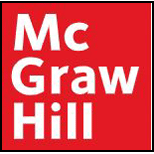
a.
To calculate: Net proceeds to Presley Corporation.
Introduction:
Net Proceeds:
It is the amount received by the seller of shares after the deduction of all the expenses and costs incurred for making such sales.
a.
Answer to Problem 19P
The net proceeds on the sale of shares to Presley Corporation is $18,740,000.
Explanation of Solution
Calculation of net proceeds:
Working Notes:
Calculation of net price:
Calculation of proceeds before out-of-pocket expenses:
b.
To calculate: The EPS of Presley Corporation immediately prior to the issue of stock.
Introduction:
Earnings per share (EPS):
It is the profit earned by shareholders on each share. A higher EPS indicates a higher value of the company because investors are ready to pay a higher price for one share of the company.
b.
Answer to Problem 19P
The EPS of Presley Corporation immediately prior to the issue of stock is $3.43.
Explanation of Solution
Calculation of the EPS immediately prior to the issue of stock:
c.
To calculate: The EPS of Presley Corporation immediately post the issue of stock.
Introduction:
Earnings per share (EPS):
It is the profit earned by shareholders on each share. A higher EPS indicates a higher value of the company because investors are ready to pay a higher price for one share of the company.
c.
Answer to Problem 19P
The EPS of Presley Corporation immediately post the issue of stock is $2.48.
Explanation of Solution
Calculation of the EPS immediately post the issue of stock:
d.
To determine: The
Introduction:
Rate of Return (ROR):
A measurement of the
d.
Answer to Problem 19P
The ROR that must be earned to prevent any dilution in an EPS of $3.43 is 14.66%.
Explanation of Solution
The calculation of ROR without dilution of the EPS is shown below.
Hence, 14.66% is the rate of return required to be earned on the net proceeds to earn an EPS of $3.43.
Working Notes:
Calculation of incremental earnings:
Calculation of earnings:
e.
To determine: The rate of return that must be earned by Presley Corporation on its proceeds to earn a 5% increase in its EPS during the year it went public.
Introduction:
Rate of Return (ROR):
A measurement of the profit earned or loss incurred on an investment over a specific time-period is the ROR. It compares the gain/loss to the costs incurred on the initial investment.
e.
Answer to Problem 19P
The ROR that must be earned to earn an increase of 5% in the EPS is 17.29%.
Explanation of Solution
The calculation of ROR to earn an increase of 5% in EPS is shown below.
Hence, 17.29% is the rate of return required to be earned on the net proceeds to earn an increase in EPS of 5%.
Working Notes:
Calculation of incremental earnings:
Calculation of earnings with a 5% increase:
Want to see more full solutions like this?
Chapter 15 Solutions
FOUND.OF FINANCIAL MANAGEMENT-ACCESS
- What is the finance ? tell about its significant.arrow_forwardTake value of 1.01^-36=0.699 . step by steparrow_forwardsolve this question.Pat and Chris have identical interest-bearing bank accounts that pay them $15 interest per year. Pat leaves the $15 in the account each year, while Chris takes the $15 home to a jar and never spends any of it. After five years, who has more money?arrow_forward
 Intermediate Financial Management (MindTap Course...FinanceISBN:9781337395083Author:Eugene F. Brigham, Phillip R. DavesPublisher:Cengage Learning
Intermediate Financial Management (MindTap Course...FinanceISBN:9781337395083Author:Eugene F. Brigham, Phillip R. DavesPublisher:Cengage Learning
